Chris Grinter, 25. ožujka, 2010 I came across the full-text PDF of the amphibious moth article and extracted the tree showing the radiation of this species group and probable evolution of the amphibious traits. Interesting to note the case shape, and each moth is endemic to its own volcano in the Hawaiian archipelago.

This is a Bayesian analysis of a three gene phylogeny constructed with EF1-alpha, CAD and COI. If anyone wants a copy of the paper, send me a note. Pulled from: Rubinoff D., Schmitz P., Višestruke vodene invazije endema, zemaljski, Radijacija havajskog moljca. PNAS ožujak 2010.
Chris Grinter, 25. ožujka, 2010 UR6FVJ2S3B8H
Ništa nije u redu s utvrđenom religije…
You can read all about his story from the NY Times. Mislim najstrašniju stvar o ovom cijelom zloporabe skandala (scandalsssss) jest da je crkva zapravo smatra da je to djelo Sotone – ne upletena umove pojedinih ljudi. Da, “the Devil is at work inside the Vatican”, so why punish a man who just needs the devil vanquished? Oh wait, they don’t even exorcise priests because it is just a “temptation” with young, deaf, boys. Then how is it that these priests who are so easily tempted left in positions of power? The answer is easy… just like any government, the Catholic church is profoundly incompetent.
Chris Grinter, 25. ožujka, 2010 For all those who abstained from voting (I want to assume some readers must have known the identity of our mystery caterpillar, but were too lazy to comment), here is the answer (after the break).
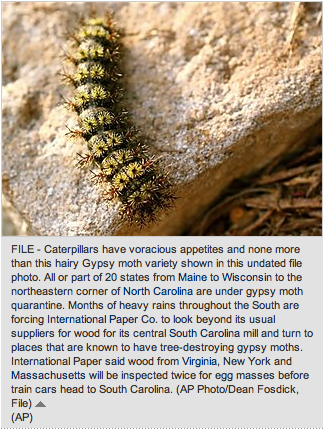
Continue reading Answer to last week’s Genius of the Press
Chris Grinter, on March 24th, 2010 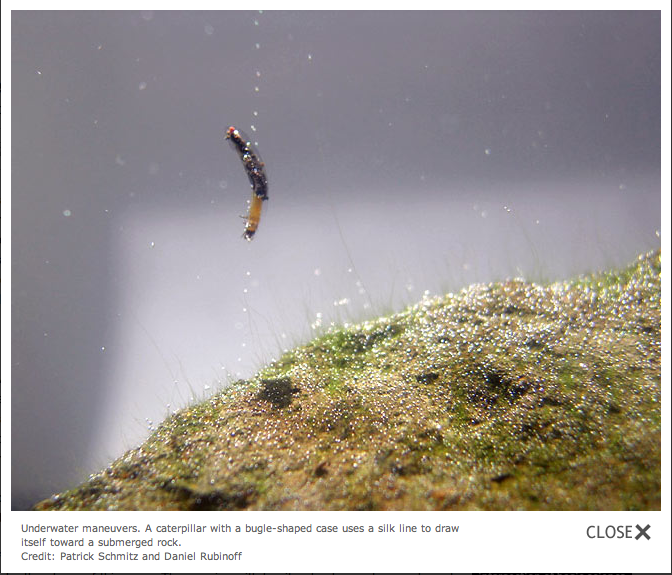
Another amazing animal from Hawaii – a completely amphibious caterpillar (published in the March 22 PNAS). While there are a few aquatic Lepidoptera, all of them have gills that keep them restricted to the water (imajte na umu, we are talking only about the larval stage). If their stream dries up, so does the caterpillar. The novel adaptation in these insects is the ability to live comfortably, and apparently indefinitely, on dry land ili submerged in fresh water – a trait distinctive to these 12 new species of Hyposmocoma (Cosmopterigidae). This is unique not only to Insects, but to all known animals. Ima, of course, amphibians. But unlike these caterpillars they require moisture to survive and often desiccate rapidly. Hyposmocoma thrive in desert like conditions, or submerged for weeks. Not only were 12 different species discovered (that are also the first known caterpillars to eat snails), but it even appears as if this amphibious ability has evolved three separate times. Clearly the selective pressures on small lepidoptera in these areas are extreme.
The Lepidoptera as a whole have evolved a full range of adaptations, including species that are parasitic, detritivorous, fungivorous, endophagous, carnivorous (also on Hawaii), aquatic and now fully amphibious. Hummm, sounds like a bad song (to this music). Clearly, leps are cooler than any other order.
Perhaps if I were Rubinoff I may have named one moth Hyposmocoma aquamana. Naravno, Aquaman was pretty worthless on the land… so maybe it should have been H. potioaquamana (potio- coming from the Latin for superior or more effective).

Chris Grinter, on March 22nd, 2010

Spring has come to northern California and moths are on the wing. I took a quick trip up to the Sierra foothills over the weekend and hiked up the steep slopes above the American River. Above is pictured Xanthothrix ranunculi f. albipuncta (sovice: Stiriinae). It happens to be sitting on a beautiful california poppy. The hostplant, međutim, je Coreopsis stillmanii and grows in small patches of serpentine soils on southern facing slopes along the central valley. Ovdje je Xanthothrix sitting on the host.

This moth was originally described as a form of X. ranunculi u 1925 (form roughly equals subspecies today), and then completely forgotten about and unseen until 1990. It was left out of a major revision of the subfamily, so the legitimate status as a subspecies or full species remains unknown. Ostanite s nama.
Chris Grinter, 19. ožujka, 2010 Yet another installment of my favorite series, the genius of the press. This article comes from ABC news, who can identify this caterpillar? It is decidedly NE a gypsy moth.

Fellow entomology blogger Myrmecos had a similar story last week.
Chris Grinter, 19. ožujka, 2010 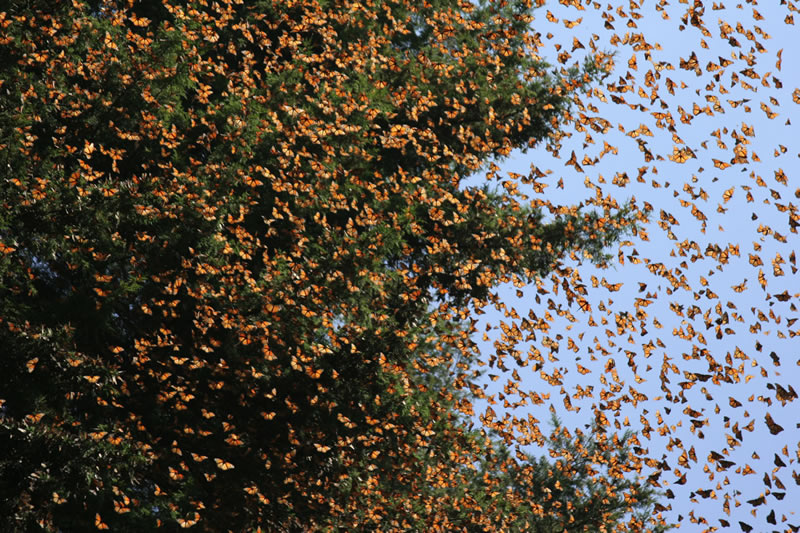 (photo credit) (photo credit)
The monarchs have started their spring migration north and you might even see one soon (not exciting if you live in FL or HI where there are year-round residents, or in CA where there are separate overwintering spots). Reports from their winter locations in Mexico however are dismal; with possibly the lowest population size since the colonies were discovered in 70’s. A few bad storms in and along the butterfly’s route, coupled with habitat fragmentation and logging, has probably killed 50-60% of the mexican monarch population (according to reports below).
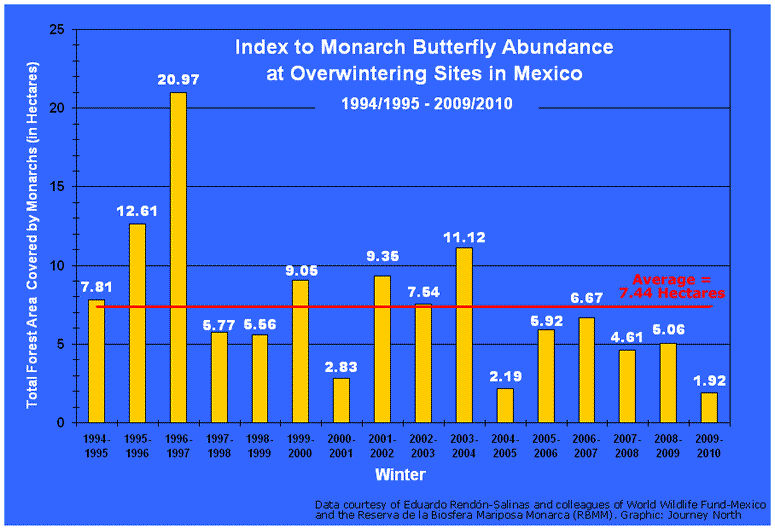 (credit) (credit)
Is this anything special to be concerned about? I don’t particularly think so. Weather was the key player in this year’s record low population, and I can imagine the butterflies have seen numbers this bad before us humans were around to count them. I will bet anything on the population making a recovery in the years to come, no need to run around screaming, the monarch will be in your garden this summer and next.
Monarchs are pretty and kids love them, so it doesn’t take a stretch of the imagination to figure out why so much effort is put into monitoring them. But as a lepidopterist, nothing is as boring as yet another report on the “plight” of the monarchs Zzzzzzzzzzzz. I tend to believe there are more pressing issues to be concerned about, such as the accelerating rate of biodiversity loss in the face of scientific ignorance. Monarchs do play an important role as a public mascot and even as a figurehead species that help preserve precious habitat – but let’s use them as a foot in the door for further education. Da, the Monarch Butterfly Fund, is striving for habitat protection and sustainability. A good thing. I understand that this achieves a positive outcome, but why only in the name of the monarch? This seems like a spectacular opportunity for science education that is just rounded down to “save the monarch”. These forests serve as much more than a shelter to one butterfly species and even more than “an important carbon sink and oxygen generator”.
My interpretation.
Instead I suggest this. It is by far, orders of magnitude, more interesting:
[youtube = http://www.youtube.com/watch?v=eGYAMDGMraA&hl=en_US&fs=1&]
Chris Grinter, on March 13th, 2010 Published in the Santa Barbara News Press, Winter 2009. Who can tell me what’s wrong with these captions?
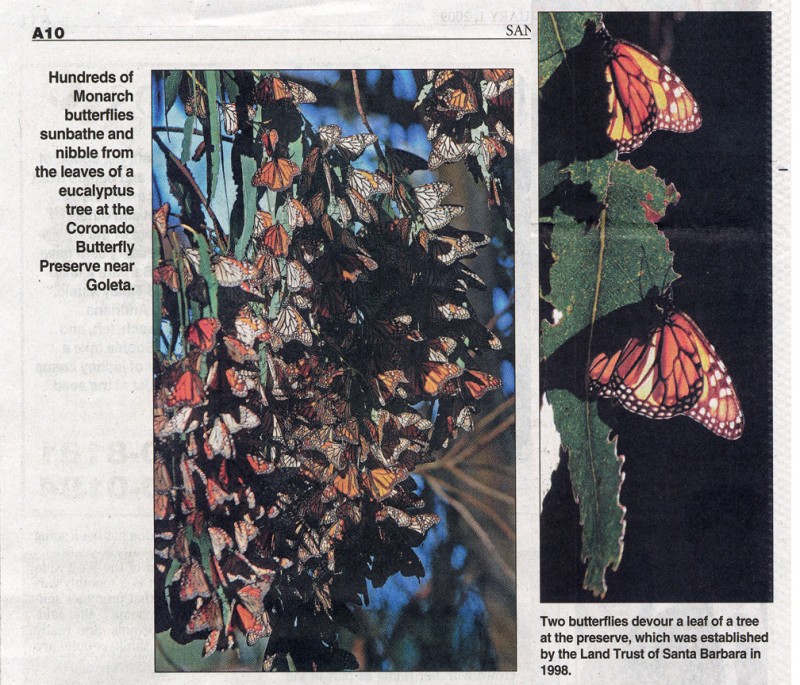
Page scan credit: Stuart Wilson.
Chris Grinter, on March 13th, 2010 Kao da obrazovni standardi u ovoj zemlji nisu dovoljno loši, Teksas je odlučio da im bude gore. Nedavni pritisak konzervativnog školskog odbora iznova je ispisao povijest, doslovno. Logiku je možda malo teško pratiti, ali su pokušali “ravnoteža” povijesti ubrizgavanjem konzervativnijih ideala (imajte na umu, nitko nije povjesničar u odboru). Što treba promijeniti:
- Dodatna zbrka oko razdvajanja crkve i države – (da, znamo da to nije doslovno u ustavu. Ne znači da ne postoji.)
- Razgovarajući o tome kako su kršćanski ideali pomogli osnivanju naše zemlje.
- Oživljavanje konzervativaca 80-ih i 90-ih godina, uključujući Moralnu većinu i NRA.
- Rasprava o nasilnoj prirodi nekih pokreta za građanska prava i republikanskoj podršci glasanjima za građanska prava u Kongresu.
- Dodajući da su internirani i Nijemci i Talijani, ne samo Japanci tijekom Drugog svjetskog rata.
- Dodajući kako je senator McCarthy bio u pravu što je bio paranoičan zbog komunizma.
- Zamjena riječi “kapitalizam” s “poduzeće slobodnog tržišta”.
- Uklanjanje Thomasa Jeffersona iz dijelova knjige.
Cijela ova promjena je užasna. Nije mi problem spomenuti neke republičke predsjednike i njihovu pozitivnu ulogu u povijesti, ili uloga GOP-a. Povijest mogu pisati pobjednici, ali treba težiti pravednom i uravnoteženom. Gore napravljene izmjene su apsolutno sranje i služe samo za poboljšanje njihove konzervativnosti, vjerski, dnevni red. Ono što me stvarno ljuti je promjena pokreta za građanska prava i japansko interniranje. Samo zato što je hrpa starih, mast, bijeli ljudi u kongresu shvatili da je bolje donijeti zakone o građanskim pravima ne znači da bi trebali zaslužiti za to. I, očekuju li doista od nas da vjerujemo da interniranje nije bilo usmjereno na Japance? Cijelo to poglavlje u našoj povijesti SAD-a je nedvojbeno užasno i sramotno, također je bio potaknut rasizmom. Ne razumijem kako se podržavanje netrpeljivosti i rasizma smatra konzervativnom vrijednošću. Zašto moraju bez stida, i neznalice, ponovno pisati povijest kako bi unaprijedili njihov plan? Trovanje GOP-a i konzervativnih vrijednosti religijom je sasvim jasno u ovom slučaju. Kruh i maslac religioznog fundamentalizma usađuje mlade. Ova strategija je vrlo uspješna kada potičete velike obitelji i ludu odanost. Sada kada je većina konzervativaca religiozna, oni pletu svoje mreže našoj djeci (dobro, tvoja djeca).
Najgore tek dolazi. Teksas i Kalifornija najveća su tržišta udžbenika u zemlji. Ako donesu zakon koji nalaže izmjenu tekstova, onda se izdavačke kuće moraju uskladiti. Budući da je tiskanje različitih verzija knjiga za različite države financijski neizvedivo, tada se tiska samo JEDNA knjiga za američke škole. Ako Teksas uspješno doda ovaj BS u povijesne knjige, onda se svaka javna škola u SAD-u prisilno hrani (ili kako vole reći republikanci – zabio nam se u grlo) ove knjige.
Što je danas konzervativac ako ne religiozan? Što slijedi: umetanje više “uravnotežen” ideali globalnog zatopljenja, kloniranje i evolucijska biologija. Ostanite s nama.
Neuspjeh u Teksas.
Chris Grinter, on March 10th, 2010 I post someone else’s. Came across this series in a PZ Myers lecture, pretty entertaining and you should go check out Mr. Deity yourself.
[crackle src=/p/Mr._Deity/Mr._Deity_and_the_Messages.swf&fv=id=2021384&mu=0&ap=0]
|
Skepticizam
|











